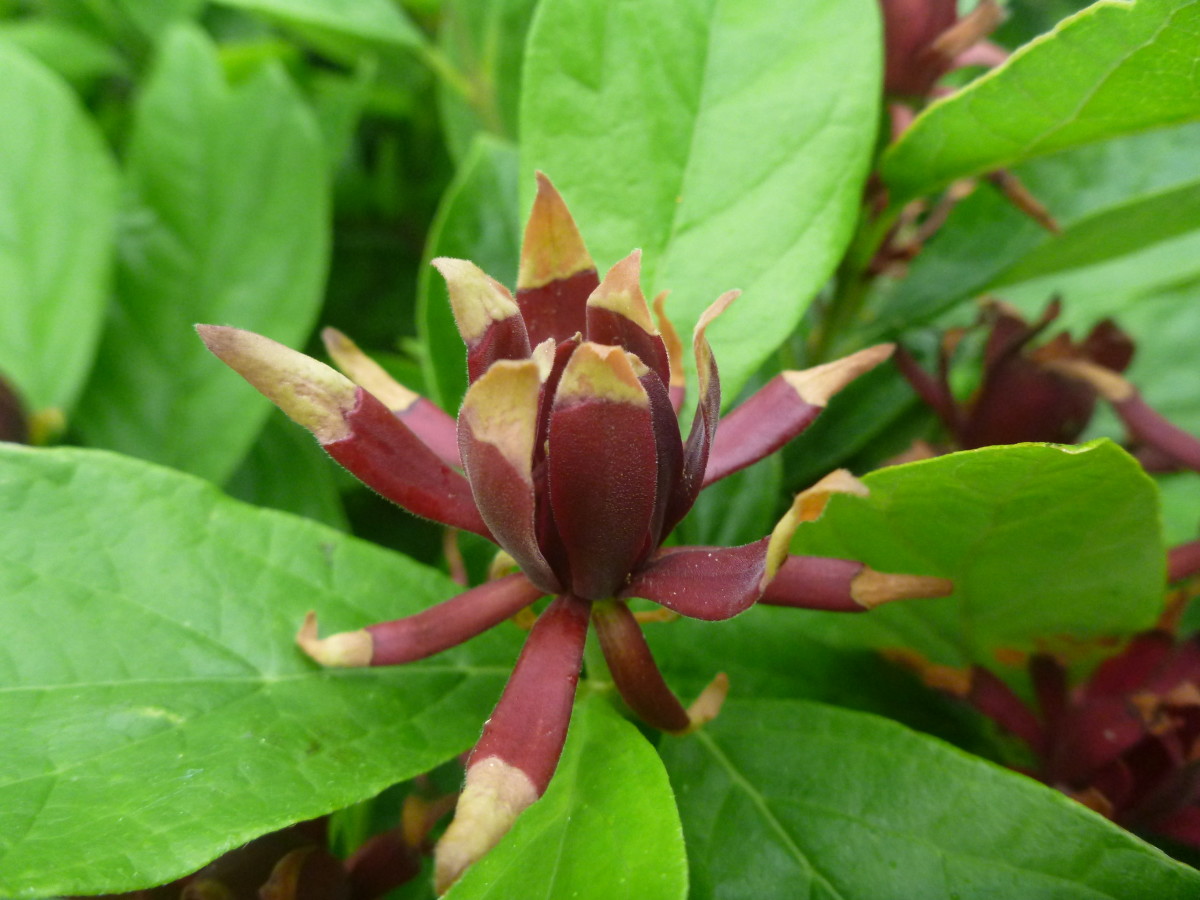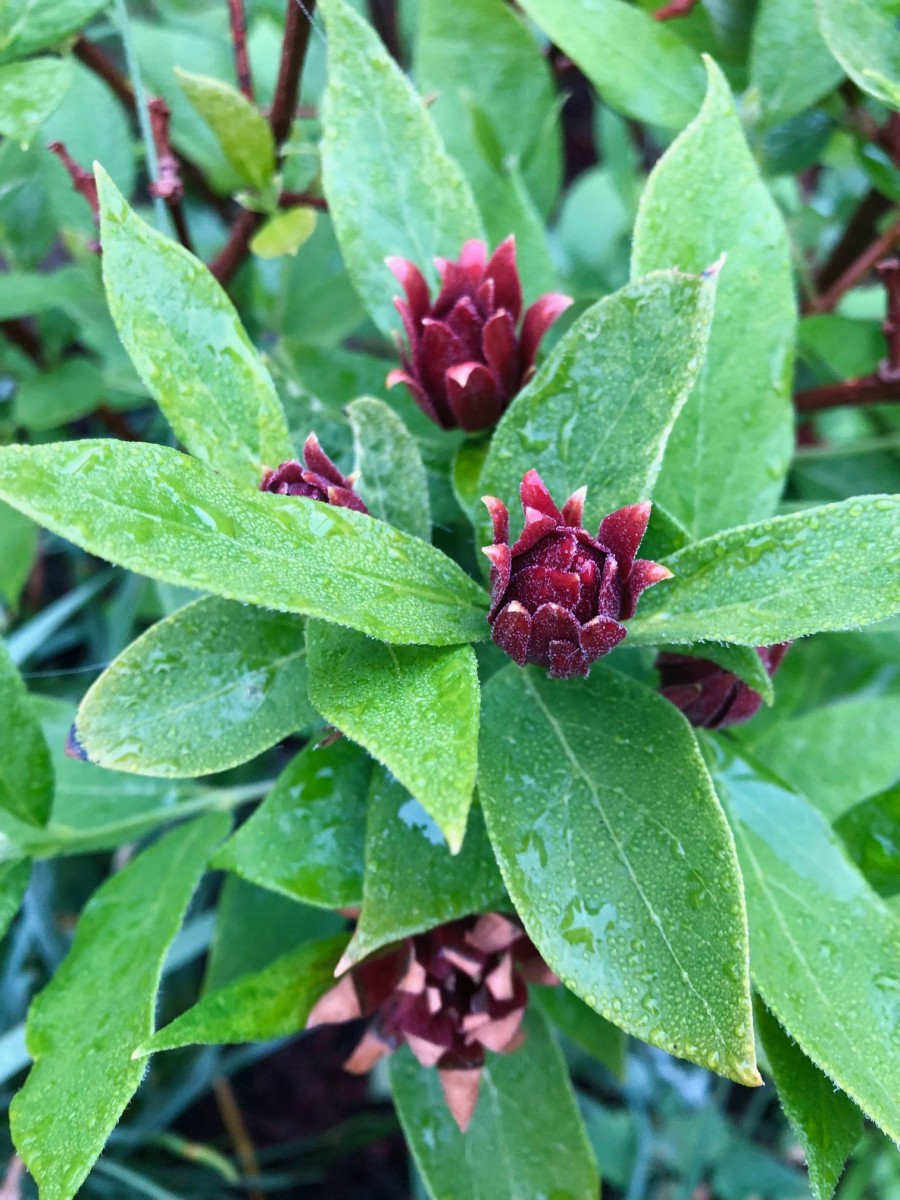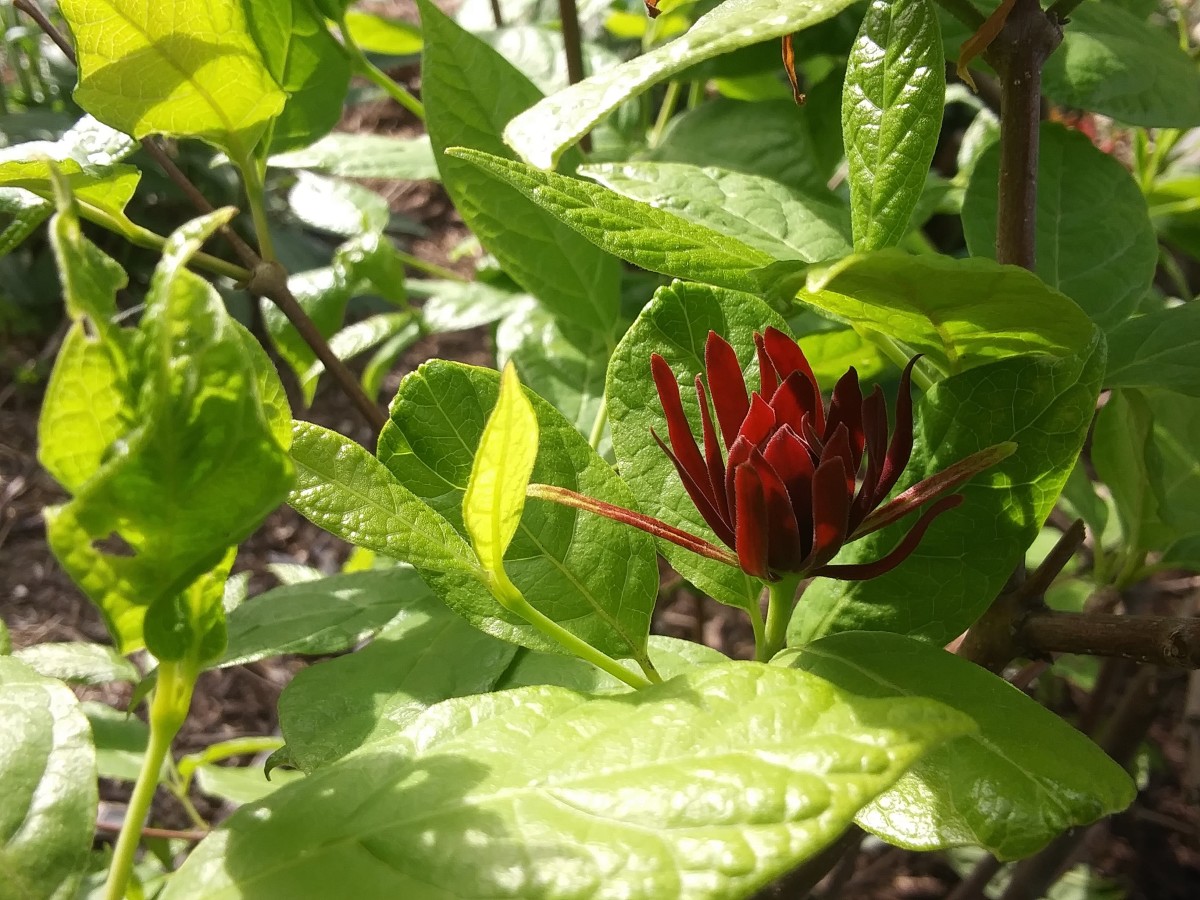6-10' × 6-12'
Beautiful aromatic native shrub with unique 1" dark burgundy-maroon flowers. Blooms as it breaks dormancy in April and May and continues flowering sporadically throughout the summer. Upright flowers resemble small magnolias with petals spiraling into similar-looking sepals, a characteristic of many primitive plants. Highly fragrant blooms reminiscent of pineapples and bananas. Interesting fig-like seedpods can hang on through the winter.
Horticulturist and author Michael Dirr considers this plant one of the great treasures of eastern North America, especially when allowed to grow into a large open specimen.
Flowers on previous year’s wood so best pruned in summer. Will become more vigorous and form colonies in warmer zones. Partial sun and moist rich soil. Native to stream edges and woodlands of southeastern U.S. Z4/5. (1-3' bare-root plants)








